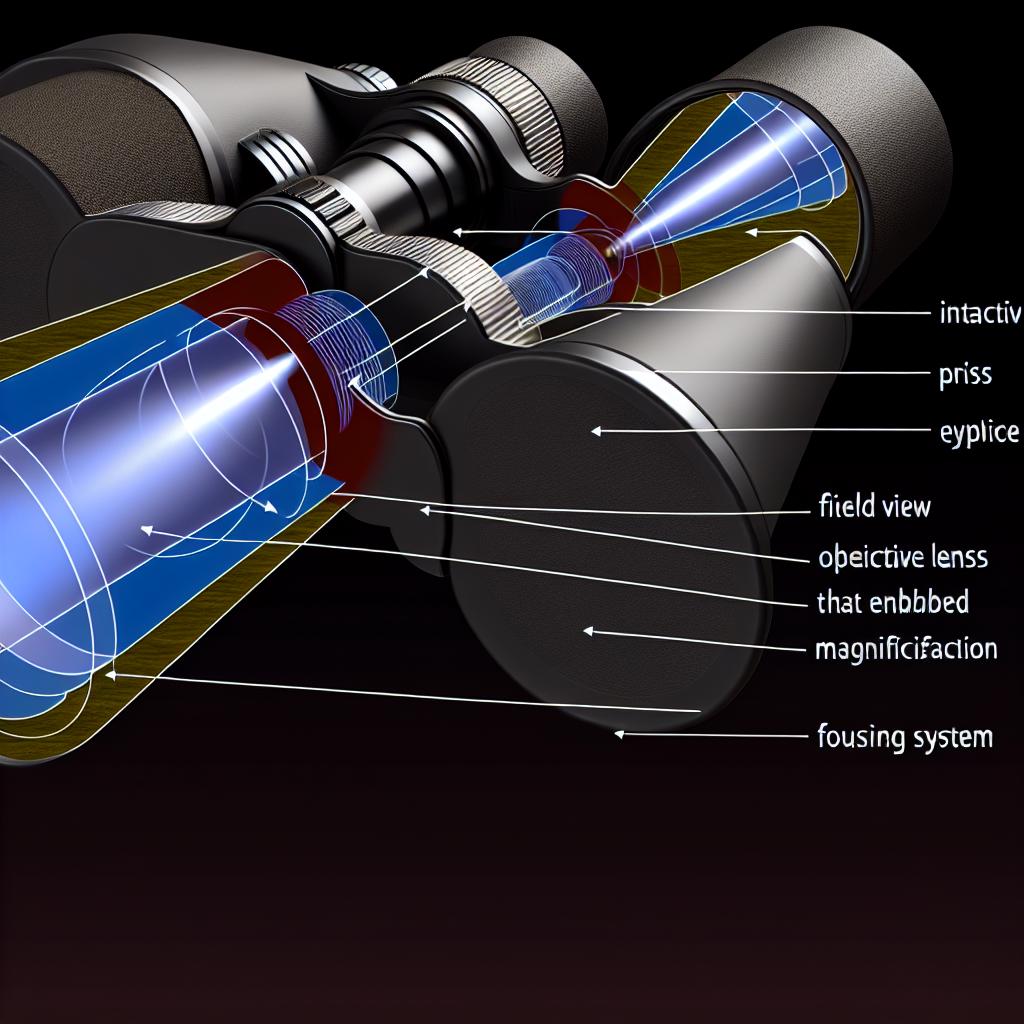Understanding the Basics of Binoculars
Binoculars are a staple tool for many outdoor enthusiasts such as nature lovers, bird watchers, and sports spectators. They facilitate a detailed view of distant objects, making the unseen visible and the faint, clear. Two primary components vital to the effectiveness of binoculars are their magnification and field of view. Grasping the functionality of these components can greatly improve one’s viewing experiences, leading to a more satisfying interaction with binoculars.
Magnification: Bringing Distant Objects Closer
When purchasing binoculars, one of the first specifications a prospective buyer encounters is magnification. This measurement indicates how much closer you will perceive an object through the binoculars than with unaided vision. Commonly expressed as a number followed by an ‘x’, such as 8x or 10x, it allows users to see details that would otherwise go unnoticed. As an example, an 8x magnification implies that the object you view appears eight times nearer than it would to the naked eye, presenting intricate details that enrich the visual experience.
Selecting the right level of magnification is not straightforward as it involves balancing different factors. Although high magnification offers detailed views, it’s accompanied by certain drawbacks. Increased magnification can lead to images that are less steady because the magnification amplifies any small movements of the hands. Additionally, a higher magnification typically narrows the field of view, limiting the extent of the scene visible at once. This does not pose a significant issue when observing distant static objects but could be problematic for tracking moving objects. Hence, for many types of wildlife observation and sports events, a magnification of 8x to 10x is usually ideal, balancing detail and stability effectively.
Field of View: A Broader Perspective
The field of view is pivotal not only in defining how much of the landscape you can see at once but also in determining ease of tracking dynamic subjects. It refers to the size of the observable area and is typically quantified either in degrees or in linear measurement such as feet visible at 1000 yards. A wider field of view provides the advantage of observing a larger section of the scene, which can be invaluable when trying to capture the full expanse of a landscape or keeping moving subjects in sight.
There exists an inverse relationship between magnification and field of view. As magnification increases, the field of view generally diminishes. This reduction can make locating and following the subject challenging, particularly if it is moving quickly. Conversely, a wider field of view, often combined with lower magnification, facilitates quick scanning of larger areas and easier subject identification. This attribute is particularly beneficial in fast-paced environments where options change rapidly, like birdwatching in a dense forest where a bird may flit between trees or during a fast-moving sports game.
Choosing Between Magnification and Field of View
Determining which binoculars to invest in frequently involves weighing the respective benefits of magnification and field of view. The appropriate balance often depends on personal preferences and the context in which the binoculars will primarily be used. For example, a bird watcher might prioritize a wider field of view to readily locate and follow birds in flight, requiring binoculars that allow rapid movement tracking. On the other hand, a hiker aiming to admire distant mountain peaks may opt for higher magnification to appreciate fine details that a lower magnification would miss.
Both characteristics have scenarios where they shine, and it’s worth noting that advantages in one area might necessitate compromises in another. Those who spend significant time in various outdoor settings might find it beneficial to own multiple pairs of binoculars, each designed for different experiences and offering different levels of magnification and breadth of view.
Additional Considerations in Binocular Selection
Besides magnification and field of view, several other factors can influence the choice of binoculars. These factors can enhance the user experience, ensuring the binoculars function effectively in various conditions. Objective lens diameter is crucial as it determines how much light enters the binoculars; larger diameters are beneficial in low-light conditions, such as dawn or dusk.
Moreover, the weight and durability of binoculars can affect prolonged use, especially if they are to be carried during extensive outdoor activities. Features like waterproofing and anti-fog coatings are also critical for maintaining clear visuals in diverse environmental conditions.
Understanding these combined elements helps curate a tailored selection that fits personal viewing habits and the environments encountered, ensuring an enjoyable and purposive viewing experience.
Conclusion
In conclusion, understanding the dynamics between magnification and field of view is key when choosing binoculars. Both elements considerably affect the user’s experience, with their importance varying depending on specific needs and circumstances. By considering these along with additional factors like lens quality and construction materials, users can ensure that their binoculars not only serve their intended purpose but also extend their range of observation, making every sighting as enriching as it is fascinating. Knowledge and careful selection of these optical tools can greatly elevate the engagement and pleasure derived from observing the world around us.
This article was last updated on: April 26, 2025


